
Digitization projects in comparison - What makes the difference?
Dr. Yevgen Bogodistov, Dr. Nadine Kathrin Ostern, Dr. Dietrich Alexander Herberg, Prof. Dr. Jürgen Moormann
Introduction
The term digitization describes the way companies renew their processes, structures and even business models. Digitization usually takes the form of projects which, in addition to all the benefits, often also entail considerable costs. These costs significantly influence the decision for or against the implementation of digitization projects.
Although the costs of digitization are significant and multi-faceted, current research fails to address the complexity of these costs in particular. It is noticeable that researchers often capture costs only as a one-dimensional variable, which, however, reflects only a part of the actual - direct and indirect - costs.
In addition to direct costs, such as those associated with investment in technological components and related capital costs, there are several types of indirect costs. These can represent significant barriers to the implementation of digitization projects. For companies, the indirect costs of a digitization project are often more difficult to determine and even more difficult to quantify than the direct costs. This is why indirect costs are often referred to as the "hidden costs" of digitization.
In our study, we examine three types of indirect costs and their influence on the evaluation of digitization projects. Building on an extensive literature review, we identified the following three types of indirect costs: organizational costs or costs incurred by a company during the implementation of a digitization project, human or people-related costs, and relational costs (Figure 1). Relational costs arise on the part of external partners who are involved in the digitization of the company.
Based on an online experiment, we gain insights into the question of what influence the indirect cost types have on the evaluation of the presented digitization projects. The analysis of these decisions allows us to identify preferences of our participants for different types of indirect costs. Direct costs were not initially considered in the context of our study.
Execution of the experiment
Participation in the experiment took about 15 minutes, and the individual decisions required a high level of concentration as well as a high level of mental effort on the part of our participants. To conduct the study, we developed different digitization projects characterized by different combinations of indirect costs (attributes) and aspects (levels) (see Figure 2).
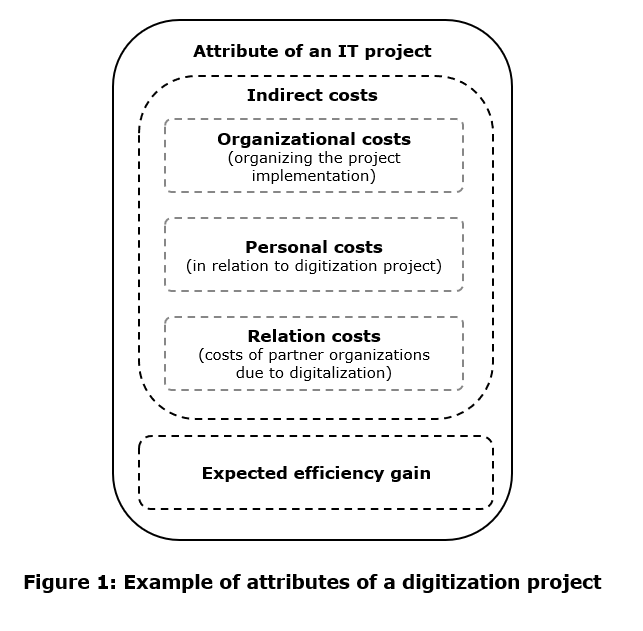
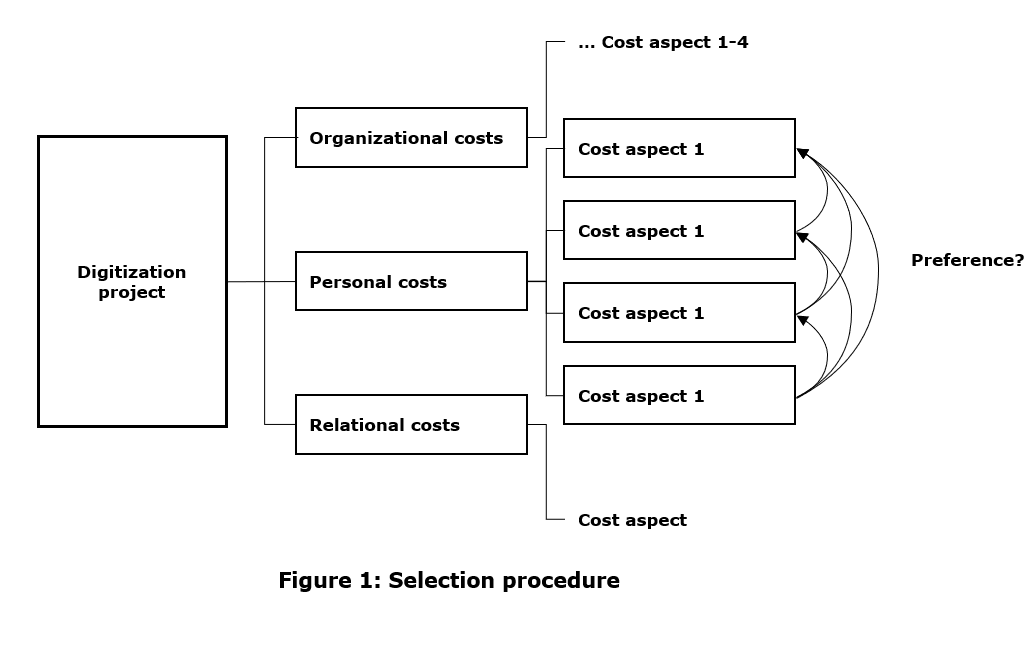
The participants in the study were each shown different pairs of digitization projects (Project A and Project B) between which they had to decide (Figure 3 shows an example). In total, 16 pairs of digitization projects were presented to our participants. The projects were randomly assigned to them (random sampling). For each project, we described the indirect costs, but also the expected increase in efficiency. In this way, we ensured that projects were evaluated not only on the basis of cost, but also on the basis of the associated benefits in terms of reduced process time. This avoided pricing the project in monetary terms, which would probably have strongly influenced the participants' decision.
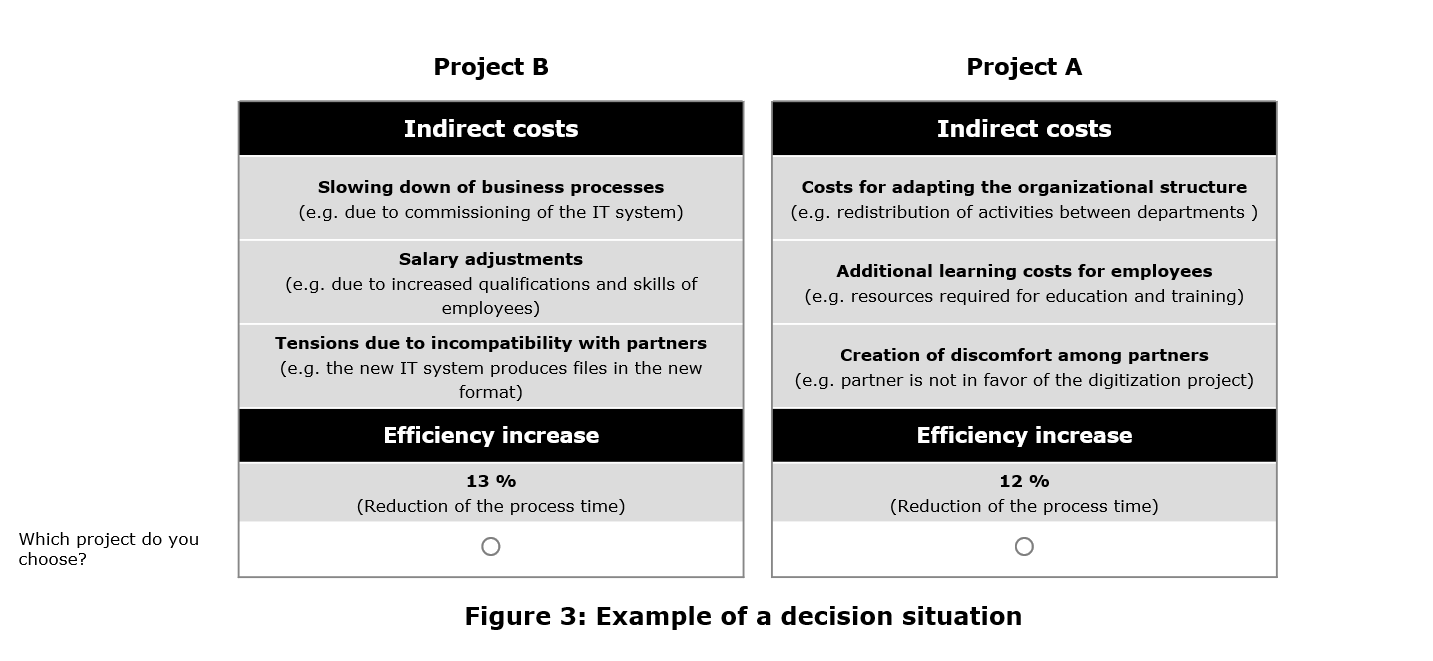
Results
Ninety-six individuals with a mean age of 43.9 years (standard deviation [SD= 9.79]) participated in the study. On average, participants made 12.7 decisions (SD= 4.92). Not all participants evaluated all 16 pairs of digitization projects. Although this is irrelevant to the evaluation of preferences, participants were only able to provide their demographic information after completing the 16 comparisons. The demographics above represent those participants who made decisions for all 16 pairs of digitization projects.
The average work experience of participants is 20.3 years (SD= 9.62), while the average work experience with the current employer is 12.5 years (SD= 7.85). 4 participants reported being a board member, 7 division/department managers, 10 participants were middle management level, and 16 participants were specialists. In addition, we asked participants about their organizational function. 11 participants stated that they work in top management, 4 in the front office, 5 in the back office, 1 participant works in product development, 2 in finance/controlling, and 15 participants work in organization/IT.
Figure 4 shows the results of the study in terms of organizational costs:
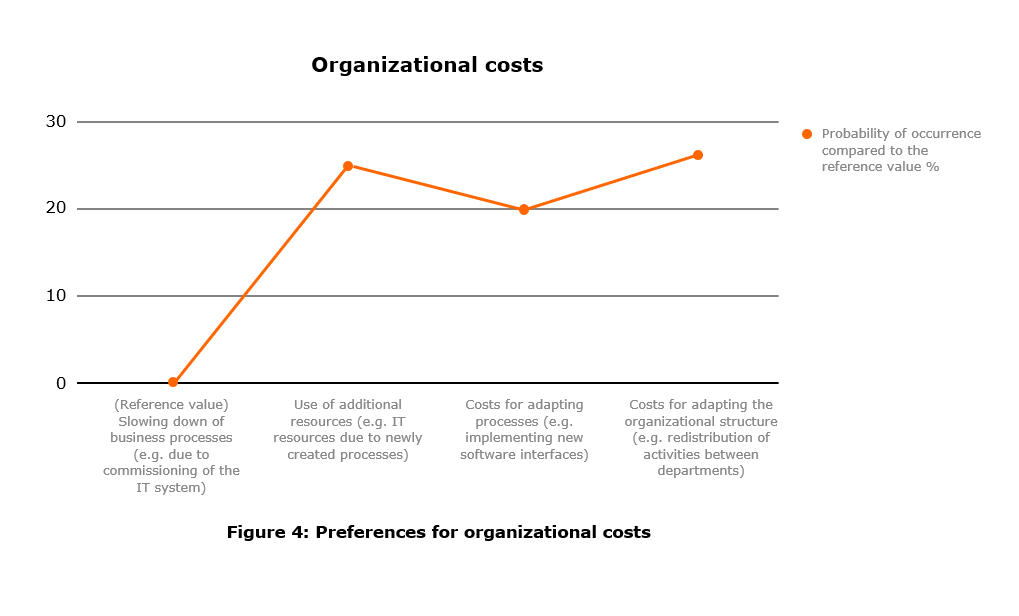
Figure 4 shows that when deciding between two digitization projects, where project A is characterized by a temporary slowdown in corporate processes during the implementation of the digitization project and the alternative project B is characterized by an extraordinary demand on corporate resources, the probability that digitization project B will be chosen is 25 percent higher, ceteris paribus. In contrast, there are no clear preferences of the participants between the digitization projects if one project is characterized by an extraordinary demand on corporate resources and the other project by an adjustment of the corporate structure.
With regard to people-related costs, our study revealed the following results:
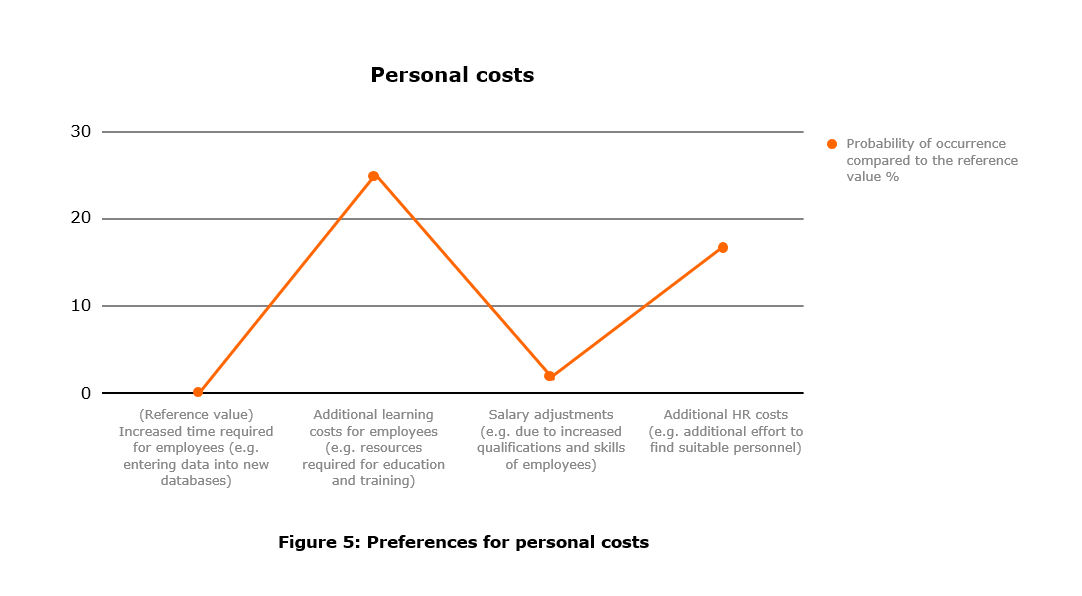
As can be seen from Figure 5, indirect costs in the form of salary adjustments (which corresponds to a salary increase in Germany) are not a reason for companies to reject digitization project A if digitization project B requires additional employee time to implement the project (e.g., to enter data into new databases). If the alternative to indirect costs in the form of salary adjustments is additional staff or employee learning costs, then participants prefer the latter. This can be interpreted as follows: Learning is not seen as a burden but as an investment in the future by our participants and is therefore chosen as the preferred option. Higher personnel costs (e.g., due to the search for suitable personnel) are apparently interpreted as a positive signal and a strong belief in the future of the company.
Finally, the study leads to the following results with regard to relational costs: as can be seen from Figure 6, relational costs play only a minor role in the decision for or against one of the digitization projects compared to operational and people-related costs. It only becomes clear that the creation of tensions within an external partner company is seen as a means of encouraging the partner organization to follow suit.
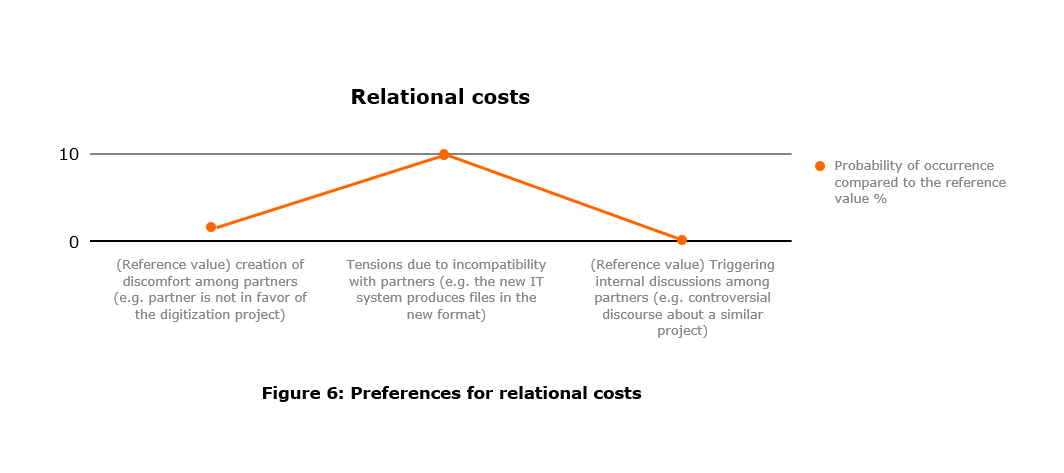
Finally, we also examined the variance explained by each of the indirect cost types individually and by the total indirect costs. Our model explained approximately 12 percent of the variance, suggesting that our tested attributes and levels are good predictors of the decisions made by participants.
Conclusion
In this study, we examined the indirect costs of digitization. Certainly, the direct costs of digitization would play a significant role in the decision between projects. Nevertheless, in this study we deliberately focused on the often neglected indirect costs of digitization.
Our study has clear implications for practice. First, companies that offer their support as service providers in the implementation of digitization projects can make their project offering more attractive by specifically influencing indirect costs. For example, if they modify a project approach so that a temporary slowdown of a process can be avoided ceteris paribus by additional IT effort, they thereby create a 2o percent more attractive project. Our results therefore suggest that service providers do not have to be better than their competitors in every respect. Rather, it is the correct positioning of projects as well as the targeted control of specific indirect costs that matter, which helps service providers to stand out against competitors.
Second, for companies looking to implement a digitization project within their organization, our results provide a clear framework. Digitization projects are typically multi-layered and include various cost components. Knowing which indirect costs are perceived as particularly critical helps with project design. Either the particularly critical perceived indirect costs can be avoided in whole or in part, or countermeasures can be developed to mitigate the negative effects of the indirect costs. This can significantly accelerate the implementation of projects. The results of this study thus provide a tool that helps companies to increase the acceptance of digitization projects among employees by enabling managers to better assess and understand them.